Elia Wunderlin, Gabriel Chiodo, Timofei Sukhodolov, Sandro Vattioni, Daniele Visioni, Simone Tilmes
First published: 23 February 2024
https://doi.org/10.1029/2023GL107285
This article was corrected on 20 MAR 2024. See the end of the full text for details.
Abstract
Sulfur-based stratospheric aerosol intervention (SAI) can cool the climate, but also heats the tropical lower stratosphere if done with injections at low latitudes. We explore the role of this heating in the climate response to SAI, by using mechanistic experiments that remove the effects of longwave absorption of sulfate aerosols above the tropopause. If longwave absorption by stratospheric aerosols is disabled, the heating of the tropical tropopause and most of the related side effects are strongly alleviated and the cooling per Tg-S injected is 40% bigger. Such side-effects include the poleward expansion of eddy-driven jets, acceleration of the stratospheric residual circulation, and delay of Antarctic ozone recovery. Our results add to other recent findings on SAI side effects and demonstrate that SAI scenarios with low-latitude injections of absorptive materials may result in atmospheric effects and regional climate changes that are comparable to those produced by the CO2 warming signal.
Key Points
- Many side effects of sulfur-based stratospheric aerosol intervention are caused by heating of the tropical lower stratosphere
- Some regional patterns of change tied to atmospheric circulation can be of the same magnitude as those that are CO2-driven
- The absorptivity of the aerosol particles increases their lifetime but decreases their cooling efficiency per Tg-S per year by 40%
Plain Language Summary
We explore the effects of the injection of sulfur into the tropical stratosphere to lower global average temperatures from those projected under a high-emission greenhouse gas scenario to the levels of a mid-emission scenario. We found that some detrimental effects of this injection are of a similar magnitude to those from climate change itself in some regions. This includes a strong warming 15 km above the tropics, which alters large-scale weather patterns in the atmosphere. In comparison to the mid-emission scenario, we find enhanced surface warming in the polar regions and modification in regional precipitation patterns over land, therefore not completely alleviating the warming of the high-emission scenario in high northern latitudes. We show that the tropical stratospheric heating is responsible for a large portion of these side effects on tropospheric climate.
1 Introduction
To mitigate the increasing negative effects of climate change, emissions of greenhouse gases (GHGs) need to be drastically decreased, with the aim of preventing further increases in GHG concentrations. However, ongoing efforts are not enough to limit global warming to below 2°C (Paris Agreement, Robiou & Meinshausen, 2018; Rogelj et al., 2016): this motivates a search for additional ways to mitigate some of the projected climate change risks. One of these potential ways is a modification of the incoming solar radiation through stratospheric aerosol intervention (SAI), (Crutzen, 2006) through the injection of sulfur into the stratosphere. This would reduce global mean temperatures, similar to explosive volcanic eruptions (Robock, 2000). However, this type of SAI has several potential side effects which are possibly severe, but not yet fully understood (Keith et al., 2016; Zarnetske et al., 2021). A lot of research, including all of the standardized experiments proposed by the Geoengineering Model Intercomparison Project (GeoMIP) (Kravitz et al., 2015), has focused on tropical injections, due to the longest possible stratospheric residence time of the emitted material (Crutzen, 2006) and thus the largest cooling efficiency per emitted mass. Only recently, research has shown that many side-effects can be alleviated through extra-equatorial injections (Bednarz et al., 2023; Kravitz et al., 2019).
Previously reported possible side effects of SAI include stratospheric ozone alteration (Tilmes et al., 2022), increased sulfur deposition (Kravitz et al., 2009; Visioni, Slessarev, et al., 2020) and a heating of the tropical tropopause and lower stratosphere (Franke et al., 2021; Tilmes et al., 2022). Simpson et al. (2019) explored the importance of this heating for tropospheric dynamics, by superimposing a temperature tendency of the tropical lower stratosphere on a reference climate, finding that some regional precipitation patterns seem to be linearly dependent on the amount of stratospheric heating. Banerjee et al. (2021) expanded on that and showed that, in northern hemisphere wintertime, SAI induces changes in stratosphere-troposphere coupling, ultimately inducing a residual continental warming over Eurasia. However, in both studies, temperature tendencies in the experiments which specifically looked at the effects of stratospheric heating were artificially superimposed. Those studies highlight the potential for some of the SAI side-effects to be driven by this heating, and highlights the potential for an amelioration of such side effects if substances that don’t absorb in the longwave (LW) are used.
In this study we isolate the impact of tropical lower stratospheric heating in a novel way in a comprehensive aerosol-chemistry climate model. We perform a set of mechanistic experiments with and without LW absorptivity of sulfuric aerosol particles in the stratosphere, but maintain fully interactive aerosol microphysics, thereby maintaining every other feature of the climatic response intact while concentrating on the direct downstream impacts of the stratospheric heating.
2 Methods
We use the global aerosol-chemistry climate model SOlar Climate Ozone Links version 4 (SOCOLv4) (Sukhodolov et al., 2021). SOCOLv4 consists of the Earth System model MPI-ESM1.2 (Mauritsen et al., 2019), the chemistry model MEZON (Egorova et al., 2003), and the sulfuric acid aerosol microphysical model AER (Feinberg et al., 2019; Sheng et al., 2015), which are interactively coupled to each other. In the AER model, the aerosol particles are resolved in 40 mass bins, ranging in dry radius from 0.39 nm to 3.2 μm (Weisenstein et al., 1997, 2007). SOCOLv4 uses a T63 truncation with 47 vertical levels, the boundary conditions follow mostly the recommendations of the Model Intercomparison Project Phase 6 (CMIP6) (Eyring et al., 2016) and the quasi-biennial oscillation (QBO) is nudged to observations, which are repeated into the future (Stenke et al., 2013). The chemical and microphysical timesteps used are described in Vattioni et al. (2023).
We performed three different sets of simulations. First, we performed a G4-like (Kravitz et al., 2011) run (G4) from 2020 to 2099 with the same emission protocol as G6sulfur (here G6) with SSP5-8.5 as background scenario with a constant injection of 5 Tg-S per year to determine the cooling per injected Tg-S. Results from G4 are then used to design the G6 experiment. Second, we performed 3 ensemble members of the G6 experiment as described in Kravitz et al. (2015) from 2030 to 2099 where the injection occurs at a height between 18 and 20 km and in a latitudinal band between 10°S and 10°N on a single longitude band (0°). We start in 2030 because of the lack of differences in global temperature between the SSP2-4.5 and SSP5-8.5 runs beforehand. The injection amount of sulfur and the temperature difference between the SSPs can be seen in Table S1 in Supporting Information S1. We compare our SAI runs with SSP2-4.5 and SSP5-8.5 runs, which are documented for SOCOLv4 in Karagodin-Doyennel et al. (2023). Third, we determine the degree to which the climatic effects of SAI using sulfate injection are caused by tropical lower stratospheric warming, by comparing the reference SAI runs (G6) against another ensemble (called G6_nolw), where we removed the LW absorption of the sulfate aerosol above the tropopause by setting the absorption coefficients in this region to zero. We performed three ensemble members for G6_nolw from 2070 to 2099 with the same emission strategy and amount as the normal G6 runs.
3 Results
From G4 we found that the stratospheric aerosol burden reaches a new equilibrium after 2–3 years. The 5 Tg-S injected per year leads to a strong heating of the tropical tropopause and a global averaged surface cooling of around 1°C. This allowed us to calibrate the sequent G6 runs, as required by the GeoMIP protocol. Henceforth, we will focus on the results of the G6 and G6_nolw runs.
3.1 Stratospheric Aerosol Burden and Size Distribution
The injection required and the resulting burdens are within the range of other GeoMIP models (see e.g., Visioni, MacMartin, Kravitz, Boucher, et al., 2021; Tilmes et al., 2022—their Figure 4). For G6_nolw the same amount of sulfur injections results in a lower stratospheric aerosol burden, because the reduced heating of the tropical lower stratosphere results in less self-lofting of the aerosol particles. Simpson et al. (2019) and Banerjee et al. (2021) have focused on the stratosphere-troposphere coupling, but didn’t show the impacts on the aerosol layer itself. Given the potential impacts on QBO and transport (Niemeier & Schmidt, 2017; Niemeier et al., 2020; Visioni et al., 2018; Visioni, MacMartin, Kravitz, Boucher, et al., 2021), we examine changes in the interannual variability of the aerosol layer. The variability increases in decades with more SAI (Figure 1a), which is not only due to an increase in aerosol mass, but also due to generally enhanced variability in the whole stratospheric aerosols life cycle (Figure 1b). Decades with large sulfur injections (e.g., from 2060 onward) show an emergence of a biennial cycle in the global stratospheric aerosol burden, indicating an interplay of the aerosol layer with the QBO phases, as shown by the increased correlation between aerosols and tropical lower stratospheric winds (Figure 1a). The likely reason for this behavior is the relationship between the aerosol self-lofting (Ohneiser et al., 2023) and sedimentation effects in the tropics under different QBO phases. In our simulations, the QBO is nudged. Therefore, the QBO would not be suppressed by sulfate aerosols, in contrast to studies with interactive QBO (Brenna et al., 2021; Niemeier & Schmidt, 2017; Niemeier et al., 2020). It is therefore plausible that such increase in the variability of the global aerosol layer might be suppressed if the QBO interaction was included. Nonetheless, other recent studies with nudged QBO also confirmed the importance of the QBO-to-aerosol effects (Visioni et al., 2018; Visioni, MacMartin, et al., 2020). Thus, our results demonstrate the ability of the aerosols to modulate stratospheric dynamics and the transport of chemical species, including the aerosols themselves.

Since SOCOLv4 is the only model with a high-resolution sectional aerosol scheme which performed the G6 experiment, the evolution of the aerosol size distribution can be more accurately assessed compared to models with a modal microphysical approach (Tilmes et al., 2022). The aerosol size distribution changes due to stratospheric circulation changes caused by changes in GHGs and ODS emissions, and continuous injection of sulfur into the stratosphere. We isolate the role of the first factor by analyzing the evolution of the size distribution in G4 (Figure 1c) where the SO2 injection is constant, while other forcings are transient. The size distribution does not change over time, with exception of the first decade, due to the stratospheric aerosol burden taking 2–3 years to reach equilibrium. This indicates that GHGs-driven stratospheric changes (e.g., faster residual circulation) do not significantly affect the aerosol size distribution. By contrast, the evolution of the aerosol size distribution in the G6 experiment in Figure 1d, demonstrates that additional changes are a result of the increasing injection rates. With increasing injections the cooling efficiency of the injected sulfur mass progressively decreases (Figure S1 in Supporting Information S1) (Tilmes et al., 2022; Weisenstein et al., 2022) because of a shift toward bigger particles, with (relatively) less particles near the optimal size range for scattering of solar radiation of 0.2 μm (Figure 1d) (Lacis, 2015). Since G6_nolw has a smaller aerosol burden compared to G6 (Figure 1a), the aerosol size distribution is shifted to slightly smaller particles (Figure 1d).
3.2 Stratospheric Impacts
The main pattern for SSP5-8.5 compared to SSP2-4.5 is tropospheric warming and stratospheric cooling (Figure 2a), which is a typical response to increased GHG concentrations (IPCC, 2021). In G6 (Figure 2b), the tropopause and lower tropical stratosphere heat by up to 15 K by the end of the century, compared to SSP2-4.5. Above this heating we have a cooling of up to 12 K, which is 3°C larger than the cooling from the difference in GHGs. This additional-cooling is a result of reduced infrared radiation from the Earth’s surface reaching these altitudes, because it is absorbed lower down by the aerosol layer (Kravitz et al., 2011). The interaction between the warming of the lower tropical stratosphere and injected sulfur is consistent with results from other GeoMIP models with interactive stratospheric chemistry, such as CESM2-WACCM or UKESM1-0-LL (Tilmes et al., 2022) (Figure S2 in Supporting Information S1). In contrast, the G6_nolw experiment does not show the lower tropical stratospheric heating, and about 50% less cooling in the middle and upper stratosphere (see Figure 1c, Figure S3 in Supporting Information S1). G6_nolw also shows a dipole structure in the polar stratosphere/mesosphere, which is related to the changes in vortex strength and isolation, as well as adiabatic heating due to downward motion (Figure 2c) (Butchart, 2022).

Since SAI and increased levels of GHGs largely alter the meridional temperature gradients in the lower stratosphere, they are also expected to alter zonal winds via the thermal wind balance. The main differences between SSP5-8.5 and SSP2-4.5 are a strengthening of the polar jet and weakening of the subtropical jets (Figure 2d). In G6, the changes are bigger because of the larger temperature perturbation; the winter hemispheric polar jet gets stronger and the subtropical jets and the polar jet on the summer hemisphere gets weaker compared to SSP2-4.5 and SSP5-8.5 (Figure 2e, Figure S5b in Supporting Information S1) as shown in Tilmes et al. (2022). In G6_nolw, most of the dynamical perturbations from G6 are gone. What remains is a weakening of the subtropical jets and a strengthening of the winter hemispheric polar jet (Figure S3b in Supporting Information S1) which could be partly explained by lower ozone levels in the winter hemisphere (and resulting radiative cooling) (Polvani et al., 2011).
One of the documented impacts of SAI concerns a potential speed-up of the stratospheric residual circulation (Brewer-Dobson Circulation, BDC) (Tilmes et al., 2022). Here we diagnose the impacts of climate change and SAI on the BDC by using an age of air (AoA) tracer, which is a good proxy for the speed of the BDC and transport of chemical substances (Waugh & Hall, 2002). Under SSP5-8.5, the BDC gets faster, and stratospheric air younger. The stratospheric heating in G6 induces a faster upwelling above the injection altitudes (Figure 2h), consistent with other studies (Niemeier et al., 2020; Tilmes et al., 2022; Visioni et al., 2018). Conversely, the subtropical jets weaken (Figure 2e) due to the cooling of the tropical troposphere (Figure 2b), which alters the propagation of tropospheric waves. As a result, the height of the critical layers lowers (Shepherd & McLandress, 2011), resulting in a slowdown of the residual upwelling in the lowermost stratosphere (70–100 hPa) (Figure 2h). Compared to SSP5-8.5 the deep branch does speed up more in G6 (Figure 2g, Figure S5c in Supporting Information S1). The difference G6 minus G6_nolw in AoA (panel i) almost mirrors that of G6 minus SSP2-4.5 (panel h), indicating that removing stratospheric heating would almost completely counteract the effects of SAI on the BDC. The slow-down of the deep branch is larger than the speed-up under G6 (Figures 2h and 2i), resulting in air which is up to 75 days older than in SSP2-4.5. However, when choosing a period with the same global average temperature in the SSP2-4.5 and G6_nolw scenarios, the differences in AoA are even smaller (Figure S3c in Supporting Information S1). Our key conclusion is that stratospheric heating is the fundamental cause of the speed-up of much of the BDC under G6 (Figure 2h). Without any concomitant stratospheric heating, SAI would slow down the BDC, offsetting the effects of GHGs.
Another environmental side-effect of SAI concerns its impacts on the stratospheric ozone layer. Although globally averaged the total ozone evolution is similar in all three SSP-5-based experiments relative to the SSP2-4.5 experiments (Figure 3a), there are significant differences in the latitudinal distribution (Figure 3b), in agreement with other models (Tilmes et al., 2022). Increased GHG emissions in SSP5-8.5 leads to ozone super-recovery (WMO, 2022) (yellow). For G6 (green), mid-latitude ozone increases, while southern hemispheric (SH) polar ozone strongly decreases, again consistent with WMO (2022) (see their Figures 6–11). G6_nolw shows a similar, but weaker pattern as G6 (blue). This decrease in the SH high-latitudes is because of the stronger polar vortex and smaller interannual variability in the SH, due to smaller wave driving than in the Arctic (Matsuno, 1971; Butchart, 2014; H. Lu et al., 2020).

In the tropical stratosphere, G6 and G6_nolw exhibit more marked differences. The vertical ozone distribution (Figure 3c) reveals the reason for these differences: ozone mixing ratios increase by up to 80% in the lowermost tropical stratosphere under G6, and decrease by up to 30% in the middle stratosphere (20–30 hPa) (Figure 2b). This pattern is caused by the opposing responses in the deep and shallow branch of the BDC (Figure 2h), leading to more ozone buildup in the lowermost stratosphere, and a shorter residence time in the region of high ozone production. In the middle and upper stratosphere (10–1 hPa), ozone mixing ratios increase because the NOx cycle is suppressed by the sulfate aerosol (Pitari et al., 2014); this cycle is projected to become the most important ozone depleting cycle by 2100 (Randeniya et al., 2002). In the polar lower stratosphere ozone losses are associated with the stronger winter hemispheric polar jet (Figure 2h) leading to more isolated air masses and the high surface area density of the sulfate aerosol combined with cold temperatures (Pitari et al., 2014; Tilmes et al., 2008; Weisenstein et al., 2022). Under G6_nolw, the effects of G6 are largely compensated. The enhanced ozone column in the midlatitudes and losses in the southern polar region are smaller (Figure 3d, Figure S3d in Supporting Information S1), likely due to the smaller polar vortex changes (Figure S3b in Supporting Information S1). The losses in the SH polar region are still apparent in G6_nolw (Figure S3d in Supporting Information S1), most likely due to SAD-driven ozone depletion.
3.3 Surface Impacts
Given the large impacts of SAI and GHGs on the stratosphere and the strong stratosphere-troposphere coupling shown in Simpson et al. (2019) and Banerjee et al. (2021), we expect changes also in surface climate.
GHGs affect surface temperatures: in comparison with SSP2-4.5, SSP5-8.5 is globally warmer by the end of the century (by 1.55 K), which is lower than what other GeoMIP models predict (Visioni, MacMartin, Kravitz, Boucher, et al., 2021), with higher latitudes being notably warmer (Figure 4a). The cooling in central Africa is most likely coming from changes in land use between the two SSPs. Compared to SSP2-4.5, G6 overcools the tropics, while the polar regions stay warmer (Figure 4b), consistent with previous studies (Visioni, MacMartin, Kravitz, Boucher, et al., 2021). This residual warming of the polar regions is strongest in the winter hemisphere (J. Lu & Cai, 2009; Hahn et al., 2021), meaning that for the same global mean temperatures, permafrost thawing might not be as efficiently stopped (Chen et al., 2023; Jiang et al., 2019). A strong residual warming is also found over Eurasia, which is consistent with a more positive Northern Annular Mode (NAM) (Rousi et al., 2020). The differences between G6 and G6_nolw (panel c) demonstrate that stratospheric heating leads to continental warming in the NH. Removing LW absorptivity leads to cooler global mean temperatures by 0.63 K (Figure 4c). This larger cooling in G6_nolw can be attributed to less water vapor in the stratosphere compared to G6 (Figure S7 in Supporting Information S1), related radiative feedbacks (Banerjee et al., 2019; Dessler et al., 2013; Lee, Visioni, et al., 2023; Nowack et al., 2023) and more scattering-efficient aerosol particles (Figure 1d) and absence of LW trapping by them. When comparing SSP2-4.5 to G6_nolw with the same global average temperature, about half of the residual mid- and high-latitude warming in the G6 experiment is removed (Figure S4a in Supporting Information S1).

SAI and increased GHGs lead to a more positive North Atlantic Oscillation (NAO, Jones et al. (2022)) and NAM in winter (Figures 4d and 4e), with a stronger effect by SAI (Figure S6b in Supporting Information S1), but no significant effects in NH summer (Figures S8d and S8e in Supporting Information S1). We find that regional impacts of SAI in SOCOLv4 in wintertime are associated with changes in the NAO/NAM, which in turn result from changes in stratosphere-troposphere coupling (Baldwin & Dunkerton, 2001), consistent with previous work (Banerjee et al., 2021). In the SH, the Southern Annular Mode (SAM) becomes more positive in summer (December, January and February), while changes are smaller in SH winter (Figure 4e, Figure S8e in Supporting Information S1). Disabling LW absorption in G6_nolw alleviates many of the changes caused by G6 and in certain regions even leads to opposite effects; the SAM shifts to slightly more negative values compared to SSP2-4.5, resulting in a signal opposed to that from climate change (Figure 4f, Figure S4b in Supporting Information S1).
Changing the circulation and temperature patterns also has a sizable impact on the hydrological balance (precipitation-evaporation, P-E). In SSP5-8.5, we find a wettening at high-latitudes, consistent with IPCC (2021). Tropical regions tend to get wetter and large parts of the subtropical oceans dryer compared to SSP2-4.5 (Figure 4g). In NH summer, a wettening of Scandinavia and a drying of southern Europe are visible, consistent with other simulations of high-emission scenarios (Figure S8 in Supporting Information S1, Rousi et al., 2020) and a more positive SAM. For G6, we find a significant drying at 50° S and a wettening near the edges of Antarctica, indicating a southward shift of the stormtracks (Bony et al., 2015; Ceppi & Hartmann, 2015; Shaw et al., 2016; Tamarin & Kaspi, 2017). In the NH, we find drying over the Sahel zone and a wettening north of Scandinavia, Alaska and Greenland. The wettening over the Caribbean basin is potentially due to shifts in the Intertropical Convergence Zone. The effects of a G6-like injection strategy on P-E can locally be as large as those from the additional GHGs from SSP5-8.5 (Figure 4h). In G6_nolw, some of these patters are substantially reduced, for example, the drying/wettening dipole in the Southern ocean and the drying of South-East Asia are no longer significant (Figure 4i, Figure S4c in Supporting Information S1). In general, removing stratospheric heating leads to smaller precipitation changes due to reduced stratospheric effects on the eddy-driven jets.
4 Discussion and Conclusions
In this study, we investigated the effects of SAI on atmospheric composition and surface climate, by using SOCOLv4, an Earth system model with interactive chemistry and sulfate aerosol microphysics. In particular, we elucidate the role played by the warming of the tropical stratosphere in the case of an injection of sulfate aerosols near the equator, which results from the absorption of terrestrial LW radiation and is a well-documented effect of natural (volcanic) and potential artificial (SAI) injections.
We confirm that with increasing injection amounts, the cooling efficiency would decrease (Lee, Visioni, et al., 2023; Weisenstein et al., 2022). When the LW absorptivity of aerosols is removed, the aerosol burden decreases due to reduced self-lofting. However, the resulting cooling efficiency in the non-absorptive case is still larger by up to 40%, which results from feedbacks with stratospheric water vapor, changes of the aerosol size distribution, and the trapping of the LW radiation by aerosols. Additionally, we confirm previous findings (Visioni et al., 2018; Visioni, MacMartin, et al., 2020) indicating that the interannual variability in global stratospheric aerosol burden increases with increased SAI and may change from an annual to a biannual cycle, indicating an involvement of the QBO and showing the ability of aerosols to modulate their own stratospheric transport pathways and residence time.
The heating in the lower tropical stratosphere simulated by our model is in agreement with other models (Tilmes et al., 2022; Visioni, MacMartin, Kravitz, Boucher, et al., 2021). By comparing SAI runs with and without LW absorption, we show that this heating significantly affects the meridional temperature gradient in the stratosphere, thereby altering zonal winds, the ozone layer, water vapor transport from the troposphere, even causing larger anomalies than unabated GHG emissions. Even though the model spread for zonal wind changes in SSP5-8.5 across CMIP6 models is large (Karpechko et al., 2022), the difference for SOCOLv4 between G6 and SSP5-8.5 is bigger and significant in more areas than the difference between the two SSPs in our model. Nonetheless, as the magnitude of this change can vary between models, this conclusion may not be generalized to other GeoMIP models and would deserve further investigation. The alterations of stratospheric zonal winds have downstream impacts on the NAO, SAM and NAM, which are more pronounced due to SAI than due to GHGs. Changes in these modes of variability may have major implications for weather patterns in the mid-latitudes, including flooding risks over Europe (Zanardo et al., 2019). We conclude that, while sulfate-based SAI with tropical injections can alleviate many of the global effects of climate change, they may induce regional effects that are comparable to those from unabated GHG emissions on some key metrics.
Our paper uncovers the role of stratospheric heating in the G6_nolw experiments in a novel way compared to previous studies, adding to their conclusions. As in Simpson et al. (2019), Banerjee et al. (2021), Bednarz et al. (2023), we find that this heating explains many of the differences between climate with (G6) and without SAI (SSP2-4.5). A good portion of side-effects caused by SAI with tropical injections are due to dynamical effects caused by the aerosols. While SAI may be successful in restoring global average surface temperatures, it would alleviate less of the warming of mid- and high-latitude regions. While the residual warming is lower than in the SSP5-8.5 scenario, it still poses some additional risks compared to SSP2-4.5 (Chen et al., 2023; Liu et al., 2023), for example, the permafrost in Siberia would be exposed to warmer temperatures. This is partly due to inhomogeneous distributions of SAI aerosols in the stratosphere (Visioni, MacMartin, & Kravitz, 2021) but also largely results from the dynamical effects induced by the aerosols’ absorptivity. Thus, using less absorptive materials (e.g., alumina or diamond) (Dykema et al., 2016; Ferraro et al., 2015) could be a viable option to alleviate some of the side effects in the troposphere and stratosphere, including the delay of ozone recovery in the SH. Antarctic ozone loss could be additionally reduced if the SAI materials were chemically inert (e.g., calcite or limestone) (Dai et al., 2020; Keith et al., 2016). Lastly, side effects from SAI on the atmospheric circulation and surface could be ameliorated by using more complex injection strategies (Bednarz et al., 2023; Kravitz et al., 2017; Lee, MacMartin, et al., 2023), including mid and high-latitude injections. However, these could pose other (unknown) challenges, which need to be further investigated.
Acknowledgments
We acknowledge funding from the ETH Research Grant ETH-1719-2. Simulations were performed at the ETH Zürich cluster EULER and Swiss National Supercomputing Centre (CSCS) under projects s1191 and s1144. TS acknowledges the support from the Karbacher Fonds, Graubünden, Switzerland.
Open Research
Supporting Information
References
Erratum
The originally published version of this article omitted some funding information from the Acknowledgments. The Acknowledgments should read as follows: “We acknowledge funding from the ETH Research Grant ETH-1719-2. Simulations were performed at the ETH Zürich cluster EULER and Swiss National Supercomputing Centre (CSCS) under projects s1191 and s1144. TS acknowledges the support from the Karbacher Fonds, Graubünden, Switzerland.” The errors have been corrected, and this may be considered the authoritative version of record.

28 February 2024
e2023GL107285
Recommended
- Stratospheric dynamics and midlatitude jets under geoengineering with space mirrors and sulfate and titania aerosolsA. J. Ferraro, A. J. Charlton-Perez, E. J. HighwoodJournal of Geophysical Research: Atmospheres
- Stratospheric ozone response to sulfate geoengineering: Results from the Geoengineering Model Intercomparison Project (GeoMIP)Giovanni Pitari, Valentina Aquila, Ben Kravitz, Alan Robock, Shingo Watanabe, Irene Cionni, Natalia De Luca, Glauco Di Genova, Eva Mancini, Simone TilmesJournal of Geophysical Research: Atmospheres
- Stratospheric ozone response to sulfate geoengineering: Results from the Geoengineering Model Intercomparison Project (GeoMIP)Giovanni Pitari, Valentina Aquila, Ben Kravitz, Alan Robock, Shingo Watanabe, Irene Cionni, Natalia De Luca, Glauco Di Genova, Eva Mancini, Simone TilmesJournal of Geophysical Research: Atmospheres
- Chemical Impact of Stratospheric Alumina Particle Injection for Solar Radiation Modification and Related UncertaintiesSandro Vattioni, Beiping Luo, Aryeh Feinberg, Andrea Stenke, Christof Vockenhuber, Rahel Weber, John A. Dykema, Ulrich K. Krieger, Markus Ammann, Frank Keutsch, Thomas Peter, Gabriel ChiodoGeophysical Research Letters
- Stratospheric Aerosol Injection Geoengineering Would Mitigate Greenhouse Gas‐Induced Drying and Affect Global Drought PatternsZhaochen Liu, Xianmei Lang, Dabang JiangJournal of Geophysical Research:


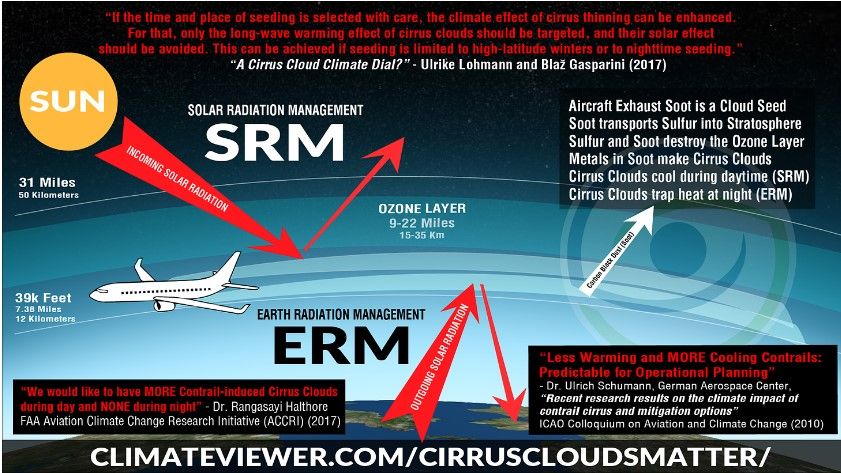
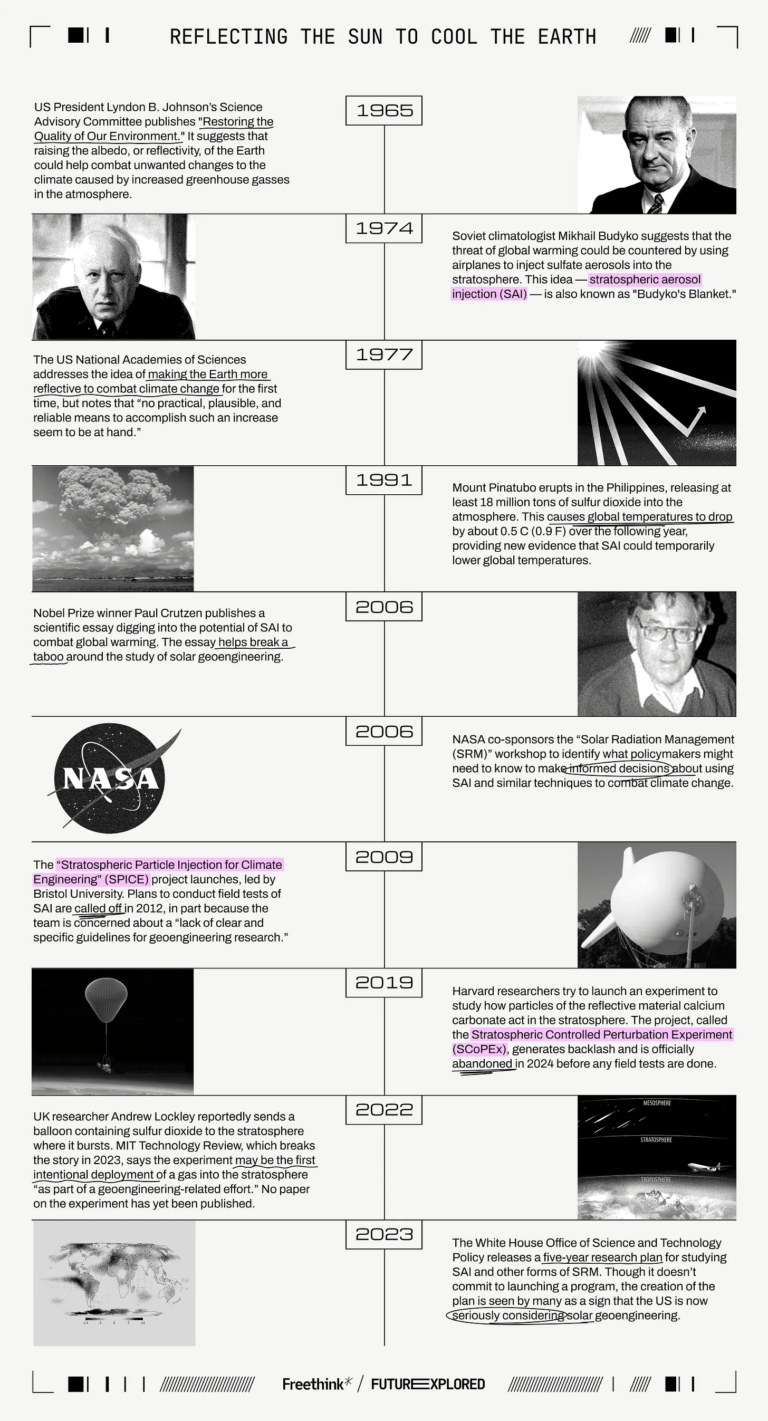
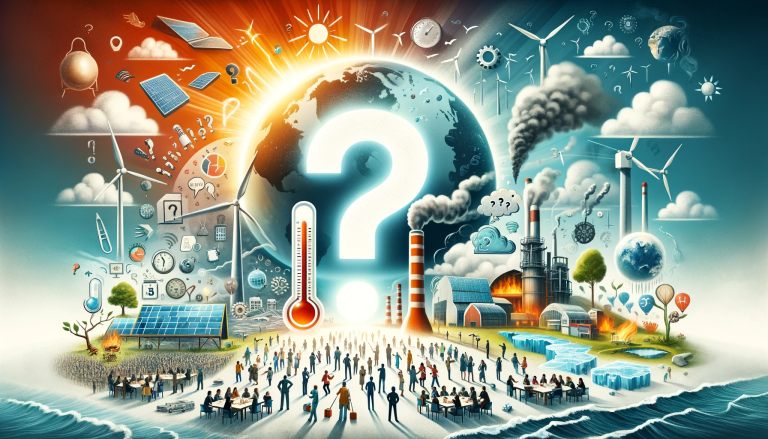




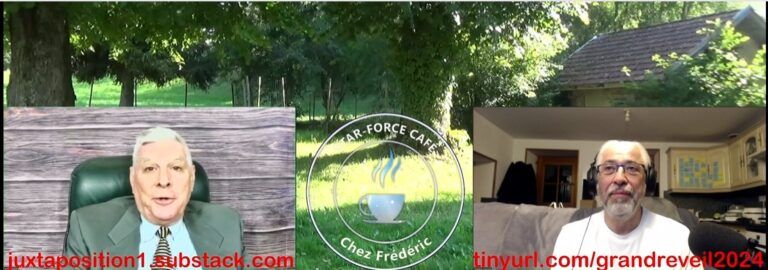
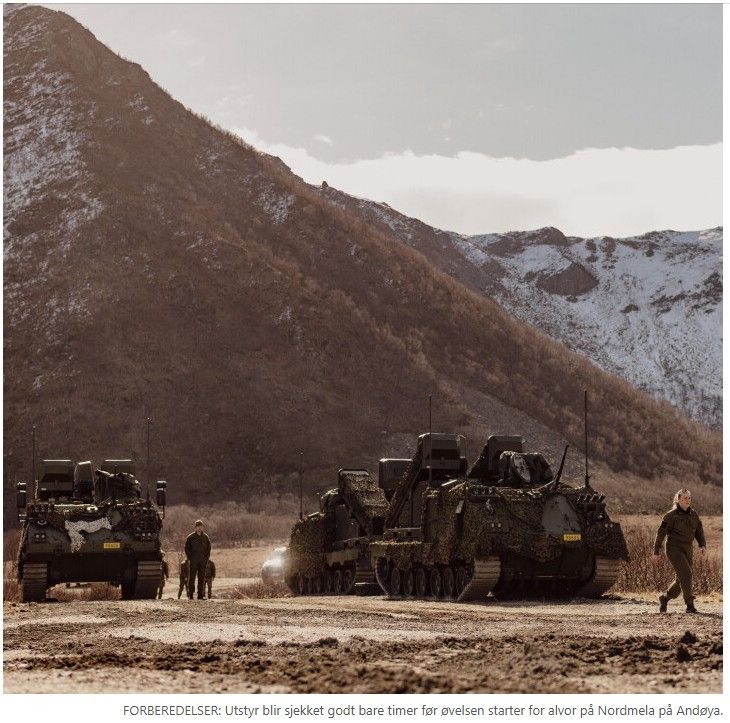


+ There are no comments
Add yours